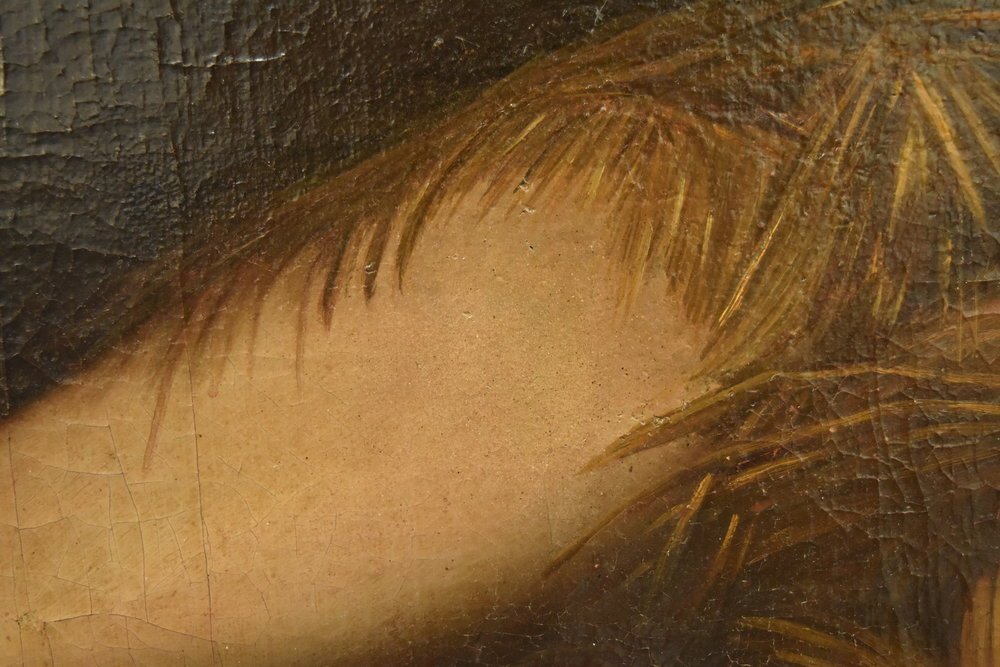Treatment of an oil on canvas by Jusepe de Ribera
Condition: The artwork is an oil on canvas by Jusepe de Ribera, an Italian painter of the Baroque period, circa 1600. There is no signature or title inscribed on the work, but the painting appears to be of the subject of St. Jerome. The canvas itself was in remarkably good condition considering its age, apart from the tacking margins which had a failed strip lining that had previously been performed. There was also a large, 9 x 8” linen patch on the verso at lower center right, which indicated that the canvas support has most probably been compromised in this area. The paint over this area is mostly non-original. There were small losses overall, and the paint film had severe craquelure over the entire surface. There was some cupping, tenting and lifting sections where movement can be felt that required consolidation. The most notable aesthetic problem, was a very yellowed and degraded varnish layer, which was also overly thick and glossy. There was significant retouching to the paint film which is visible when viewed using UV induced illumination. Read more about our Technical Analysis.
Treatment: Photographed before, under UV, during and after treatment. HEPA vacuumed with hake brush. The paint film was consolidated and set with a heated spatula. The painting was removed from its stretcher and the old, failed strip lining removed and replaced. The artwork was then re-stretched on the original stretcher. The varnish layers were then carefully removed. Initially, an attempt was made to only thin the varnish layers so that not all the overpaint would be removed from the large central damage. However, the overpaint in this region came off particularly easily, revealing an excessive amount of overpaint and unnecessary fill material which was disguising the original compositional layout of part of the straw clothing. Excessive overpaint from regions in the background and foreground were also removed. An initial brush varnish was then applied to isolate the original paint layers. The extensive area of loss was then retouched in a more restrained fashion, sympathetic to the original design. Two final spray coats of varnish were applied to protect the inpainting, and integrate the surface overall.









